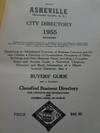
The Battle of Navarino. Battle of Navarin.
by Lee, John Theophilus
- Used
- first
- Condition
- See description
- Seller
-
Nafplion, Greece
Payment Methods Accepted
About This Item
Philhellenic: London " Engraved by Robert William Smart, and Henry Pyall, after drawings made by Sir John Theophilus Lee under the immediate inspection of Capt. Lord Vis. Inglesre".. Printed by: I Fisher. c1828. Aquatint of the Battle of Navarino by John Theophilus Lee, The !st edition with dedication; To His Royal Highness William Henry Duke of Clarence. ... With text below describing the battle in English and French. 'This Celebrated Action was fought on the 20th. October 1827, in the Bay of Navarin on the western Coast of the Morea, by the Combined Squadrons of Great Britain, France and Russia; under the Command of the British Vice Admiral Sir Edward Codrington, assisted by the French Rear Admiral Chevalier de Rigny, and the Russian Rear Admiral the Count Heiden, against the united Turkish, Egyptian, and Tunisean Fleets, comprising 65 Vessels of War, viz. 3 of the Line, 4 Double Banked Frigates, 15 Frigates, 26 from 20 to 24 Guns, 12 smaller Vessels, 5 Fire Ships. The Combined Allied Squadrons consisted of 10 Sail of the Line, 10 Frigates, 7 Sloops, and Brigs. The Battle terminated at the end of 4 Hours, in the complete destruction of the Enemies Forces. The British Loss on this Memorable day was 75 Killed, 197 Wounded. The French 43 Killed. 144 Wounded. The Russians 59 Killed, 139 Wounded. The Turkish admiral's Ship which was one of the Vessels opposed to the Asia, bearing the Flag of the British Admiral, lost upwards of 650 Men Killed and Wounded.'. marked "Proof copy". The view,the aftermath of a naval action; the British ships Asia, Genoa and Albion in the middle ground, to the right several Turkish vessels, including the Admiral's ship Sirene, dismasted and in flames; survivors clinging to wreckage and to a rescue cutter, in the foreground. List of the Combined fleet's ships and fire power below. Evenly toned; some spotting mainly to blank margins, and light spotting to sky; damp stain to edge of lower right margin and lower margin just entering text; upper left corner lacking and short tear, repaired, to left blank margin [ far from image]. The Battle of Navarino was fought off the west coast of the Peloponnesus on October 20th 1827 and effectively ended Turkish resistance to Greek independence with the destruction of the Turkish-Egyptian fleet by the British- Russian- French fleet under Vice Admiral Sir Edward Codrington, hero of Trafalgar. The news of Navarino made Codrington a hero twice over in the eyes of the general British public. But in Whitehall, senior naval and diplomatic echelons were appalled by the outcome of his campaign. It was considered that Codrington had grossly exceeded his instructions by provoking a showdown with the Ottoman fleet Initially, official disapproval of Codrington had to be restrained because of the admiral's huge popularity with the public. The Admiralty's revenge took petty form, such as its refusal, despite repeated requests by Codrington, to pay his crews their traditional prize-money from the sale of captured Ottoman treasure and goods. Meanwhile, Wellington was biding his time until he felt it was politically safe to remove Codrington from the Mediterranean theatre. Finally, in June 1828, the Admiralty announced that Codrington was being relieved of his command (although he remained in acting-command until his replacement arrived in August). Although the King felt obliged by public opinion to grant Codrington the high honour of the Grand Cross of the Bath, the Admiralty's failure to give him another operational command in his remaining decade of service or to promote him to full Admiral until shortly before his retirement from the Navy in 1837, were eloquent testimony to his fall from favour. John Theophilus Lee 1787-1843. Lee joined the Royal Navy in 1796 at the age of 9. He saw action at the Battle of Cape St Vincent in 1797 and then the Battle of the Nile the following year, as a midshipman aboard HMS Swiftsure. He passed for Lieutenant in 1806 and married in 1807. Lee then resigned from the Navy in 1809 and became a civilian attached to the Admiralty as head of the personnel department. Subsequently knighted, Lee retired to Bedhampton, where he wrote a book: Memoirs of the life and services of Sir J Theophilus Lee, of The Elms, Hampshire. He died in Torquay in 1843. Lee's professional painting career started at the Portsmouth Naval Academy from 1800-1803, where several of his drawings were used for engravings appearing in the Naval Chronicle. These included views of Alexandria, the Naval Academy, and the Greenwich Asylum. The Naval Chronicle also printed an engraving after JT Lee of a scene of the aftermath of the Battle of Trafalgar. William IV (William Henry; 21 August 1765 – 20 June 1837) was King of the United Kingdom of Great Britain and Ireland and of Hanover from 26 June 1830 until his death. William, the third son of George III and younger brother and successor to George IV, was the last king and penultimate monarch of Britain's House of Hanover. He served in the Royal Navy in his youth and was, both during his reign and afterwards, nicknamed the "Sailor King". He served in North America and the Caribbean, but saw little actual fighting. Since his two older brothers died without leaving legitimate issue, he inherited the throne when he was 64 years old. In 1827 George Canning, the Prime Minister, appointed William, Duke of Clarence, and Heir Presumptive, to the office of Lord High Admiral, which had been in commission (that is, exercised by a board rather than by a single individual) since 1709. While in office, the Duke had repeated conflicts with his Council, which was composed of Admiralty officers. Things finally came to a head in 1828 when the Lord High Admiral put to sea with a squadron of ships, leaving no word of where they were going, and remaining away for ten days. The King, through the Prime Minister, by now Arthur Wellesley, 1st Duke of Wellington, requested his resignation; the Duke of Clarence complied. Despite the difficulties the Duke experienced, he did considerable good as Lord High Admiral. He abolished the cat o' nine tails for most offences other than mutiny, attempted to improve the standard of naval gunnery and required regular reports of the condition and preparedness of each ship. He commissioned the first steam warship and advocated more. British Museum :1873,0510.175. Philhellenic Battle of Navarino
Reviews
(Log in or Create an Account first!)
Details
- Bookseller
- Mary Louise Bryan/Paralos Gallery
(GR)
- Bookseller's Inventory #
- 3065
- Title
- The Battle of Navarino. Battle of Navarin.
- Author
- Lee, John Theophilus
- Book Condition
- Used
- Publisher
- London " Engraved by Robert William Smart, and Henry Pyall, after drawings made by Sir John Theophilus Lee under the immediate
- Place of Publication
- Philhellenic
Terms of Sale
Mary Louise Bryan/Paralos Gallery
30 day return guarantee, with full refund including original shipping costs for up to 30 days after delivery if an item arrives misdescribed or damaged.
About the Seller
Mary Louise Bryan/Paralos Gallery
Biblio member since 2013
Nafplion
About Mary Louise Bryan/Paralos Gallery
Dealer in Antiquarian Maps Prints & Books with over 35 years experience.
Retail Shop in Historic centre of Nafplion Greece see hours; Internet site and private office by appointment only; Exhibiter at London Map Fair and at fairs around Europe. Member of the Antiquarian Booksellers Association & ILAB
Retail Shop in Historic centre of Nafplion Greece see hours; Internet site and private office by appointment only; Exhibiter at London Map Fair and at fairs around Europe. Member of the Antiquarian Booksellers Association & ILAB
Glossary
Some terminology that may be used in this description includes:


